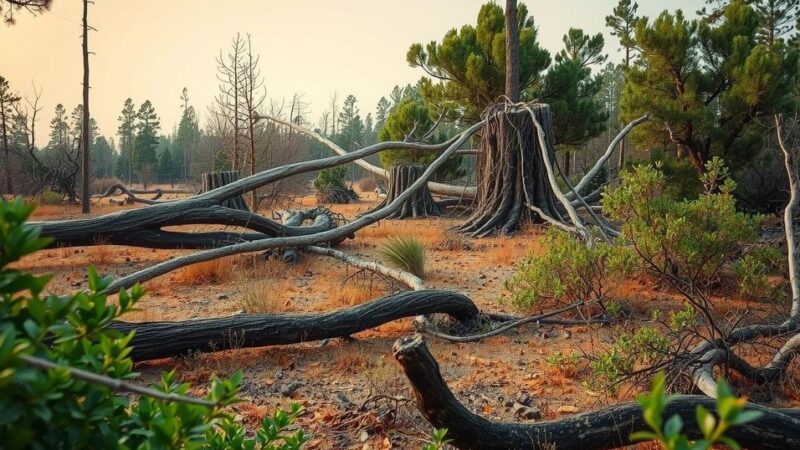Climate change has led to an increase in forest fires, resulting in detrimental effects on the environment and public health due to enhanced air pollution. A study indicates that the burned area increased by 16% from 2003 to 2019, with significant health implications arising from increased fatalities linked to fire-related air pollution. Regions notably affected include Australia, South America, and Europe.
Climate change significantly exacerbates the frequency and severity of forest fires, which in turn pose substantial risks to both environmental health and public well-being due to increased air pollution. A recent study published in Nature Climate Change, conducted by researchers from ETH Zurich and led by Seppe Lampe of the Free University of Brussels, reveals that from 2003 to 2019, the area of forest that has burned has increased by approximately 16% compared to projections made without accounting for climate change. Regions such as Australia, South America, western North America, and Siberia have been particularly affected. Conversely, the overall area burned globally has diminished by 19%, primarily due to more forests being converted for agricultural and other uses, thereby reducing the amount of land available for potential wildfires. The researchers noted that while heat and drought conditions do not directly ignite fires, they intensify the susceptibility of forest ecosystems, leading to more severe fire events. “Our study shows that once fires occur, the impact of climate change becomes increasingly significant with drier and warmer weather conditions,” stated co-author Chantelle Burton from the UK Met Office Hadley Centre in Exeter. In conjunction with this research, another study by Chae Yeon Park of the Japanese National Institute of Industrial and Science Technology investigated the health impacts of smoke produced by these fires. The study highlights a troubling increase in deaths related to air pollution from wildfires, which skyrocketed from approximately 46,400 annually in the 1960s to nearly 98,750 in the 2010s. In the 2010s, over 12,500 deaths per year attributed to air pollution from these fires were linked to climate change, a stark rise from approximately 670 deaths per year in the 1960s, with areas such as South America, Australia, and Europe being severely impacted. “Our research makes it clear that climate change increasingly poses a threat to public health, as smoke is also affecting densely populated areas more frequently,” explained Park. The studies employed epidemiological methods to demonstrate the statistical relationships between exposure to particulate matter from wildfires and resultant health issues like cardiovascular diseases. However, it is essential to note that such studies reveal correlations rather than asserting direct causations. Thus, the reported figures should be viewed as statistical estimates rather than precise clinical findings.
The interaction between climate change and forest fires has become an increasing concern for both environmentalists and public health officials. The pronounced increase in forest fires has been partly attributed to rising temperatures and prolonged droughts—two direct consequences of global warming. Areas that experience significant alterations in climate patterns are more susceptible to wildfires, which have detrimental effects not only on the natural environment but also on population health through the release of harmful airborne particulates. Studies have increasingly focused on quantifying the relationship between climate events, forest fires, and health impacts, revealing alarming trends.
The evidence presented in the studies highlights an urgent need to address the impacts of climate change on forest fire frequency and severity. The significant rise in deaths associated with fire-related air pollution underscores how intertwined environmental changes affect public health. Policymakers must consider these findings as they strategize responses to both climate change and public health management, emphasizing the importance of mitigating climate impacts to protect communities.
Original Source: www.swissinfo.ch






